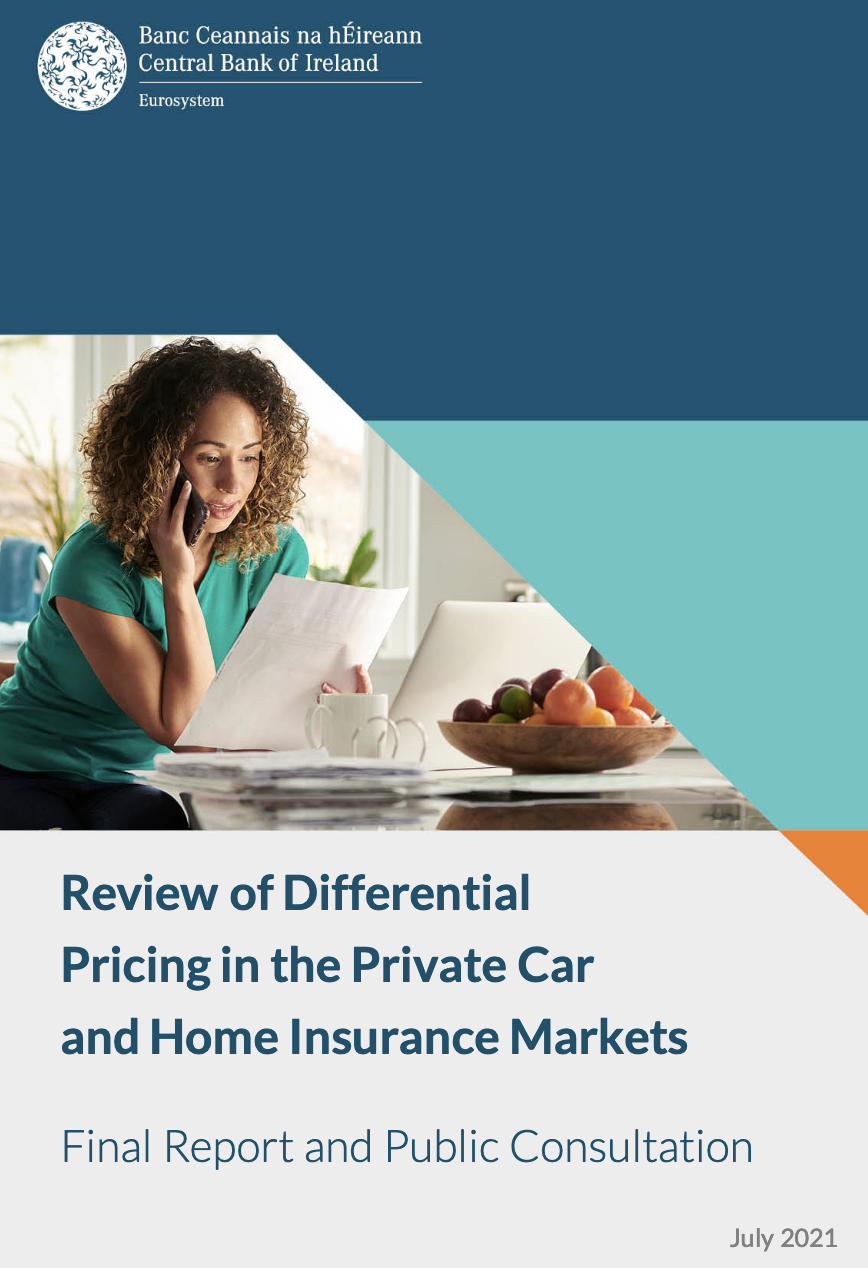Insurance Pricing Fairness: Addressing Unintentional Bias
Insurance pricing fairness is a critical issue in today’s complex landscape, where algorithmic bias in insurance can lead to unfair discrimination against certain groups. As the Casualty Actuarial Society (CAS) highlights in its recent reports, the reliance on advanced modeling techniques, including machine learning and artificial intelligence, necessitates a thorough examination of these practices to ensure they promote equity rather than inequality. Regulatory frameworks for insurance are evolving, urging insurers to address potential biases that can emerge from their actuarial practices. The integration of telemetrics in insurance pricing offers a promising avenue for reducing reliance on potentially discriminatory demographic factors, paving the way for a more just insurance system. By prioritizing fairness, the industry can enhance consumer trust and build a more inclusive marketplace for all.
The concept of fairness in insurance pricing encompasses various elements, including the ethical implications of using technology in risk assessment. As insurers increasingly adopt innovative approaches like telematics, they must navigate the delicate balance between effective pricing and the potential for algorithmic bias in insurance. The regulatory landscape is rapidly shifting, with a focus on ensuring that insurance practices do not inadvertently discriminate against individuals based on irrelevant characteristics. This discussion not only highlights the importance of transparency and accountability in actuarial practices but also emphasizes the role of industry leaders in fostering an equitable environment. By addressing these challenges head-on, the insurance sector can strive to create a fairer and more accessible system for all stakeholders.
Understanding Algorithmic Bias in Insurance Pricing
Algorithmic bias in insurance pricing is a critical concern that has garnered increasing attention from actuaries and regulators alike. As insurance companies increasingly rely on sophisticated algorithms and machine learning models to determine premiums, the risk of inadvertently perpetuating unfair discrimination rises. This bias can emerge from the data used to train these algorithms, which may reflect historical inequalities or societal biases. Consequently, actuaries must be vigilant in identifying potential biases within their models and consider the broader implications of their findings on pricing fairness.
The Casualty Actuarial Society (CAS) has taken the initiative to address these challenges by providing resources that help actuaries detect and mitigate algorithmic bias. The recent reports not only highlight the importance of fairness in pricing but also outline actionable steps for actuaries to incorporate fairness into their practices. By fostering a deeper understanding of how algorithmic bias operates within insurance pricing, the CAS aims to empower actuaries to develop more equitable pricing strategies that align with regulatory expectations and societal values.
The Role of Regulatory Frameworks in Ensuring Fair Insurance Pricing
Regulatory frameworks play a pivotal role in promoting fairness in insurance pricing, particularly as the industry adopts more advanced technologies. The CAS report analyzing the regulatory landscape for non-discriminatory AI usage underscores the necessity for transparent guidelines that govern the deployment of algorithms in insurance. By establishing clear standards for accountability and governance, regulators can help mitigate the risks associated with algorithmic bias and ensure that insurers are held responsible for the fairness of their pricing strategies.
Furthermore, the involvement of state insurance commissioners in addressing algorithmic bias highlights the growing recognition of the need for regulatory oversight. While many departments express concern over discrimination, the survey findings reveal a gap in proactive investigations into these issues. As regulators continue to refine their frameworks, it is essential for actuaries to remain informed and engaged in discussions surrounding fairness and bias. This collaborative approach between actuaries and regulators can ultimately lead to a more equitable insurance marketplace.
Incorporating Telemetrics in Insurance Pricing for Fairer Outcomes
Telematics technology has the potential to revolutionize insurance pricing by reducing reliance on sensitive demographic data, which often contributes to biased pricing models. The CAS report on auto telematics illustrates how data points such as driving behavior—miles driven, hard braking, and acceleration—can provide a more accurate assessment of risk without resorting to age, gender, or marital status. This shift towards data-driven risk assessment can help create a more equitable pricing structure that reflects individual driving habits rather than demographic stereotypes.
By embracing telematics, insurers can not only enhance their risk assessment capabilities but also foster greater trust among policyholders. As consumers become increasingly aware of how their data is used in pricing decisions, transparency regarding telematics data can alleviate concerns about privacy and discrimination. Consequently, actuaries must advocate for the ethical use of telematics in pricing models to ensure that these innovations contribute positively to the industry’s goal of promoting fairness in insurance pricing.
Actuarial Practices: Balancing Risk and Fairness
Actuarial practices must evolve to incorporate considerations of fairness alongside traditional risk assessment methodologies. The CAS’s guide on navigating fairness in insurance pricing provides actuaries with essential tools to critically evaluate their models for potential biases. By understanding the implications of their actuarial decisions, actuaries can help ensure that pricing reflects true risk without perpetuating unjust discrimination. This balance between risk assessment and fairness is crucial in maintaining public trust in the insurance industry.
Moreover, actuaries are in a unique position to influence the broader conversation about fairness in insurance pricing. As experts in risk assessment, they can advocate for practices that prioritize equitable treatment for all policyholders. By actively engaging in discussions about algorithmic bias and the ethical use of AI and machine learning, actuaries can help shape a more inclusive regulatory framework that addresses the needs of a diverse society. This proactive stance is essential for fostering a fair insurance marketplace that serves everyone fairly.
Addressing Unfair Discrimination in Insurance Markets
Unfair discrimination in insurance pricing not only undermines societal equity but also poses significant risks to insurers’ reputations and customer relationships. With the increasing scrutiny on how demographic factors are utilized in pricing, it is essential for insurers to adopt robust strategies that eliminate bias from their models. The CAS reports emphasize the need for a thorough evaluation of existing practices and the implementation of measures that promote fairness across the board, highlighting the importance of transparency and accountability.
In today’s diverse marketplace, the consequences of unfair discrimination can be profound. Insurers must recognize that discriminatory practices not only alienate potential customers but also risk regulatory repercussions. By fostering a culture of fairness and inclusivity, insurers can not only comply with regulatory requirements but also build stronger relationships with their clients. Ultimately, addressing unfair discrimination is not just a matter of compliance; it is a strategic imperative that can drive business success in an increasingly competitive landscape.
The Impact of AI and Machine Learning on Insurance Pricing
The integration of AI and machine learning into insurance pricing strategies presents both opportunities and challenges. On one hand, these technologies enable more precise risk assessments and personalized pricing models. On the other hand, there is a growing concern about the potential for algorithmic bias to emerge from these advanced systems. The CAS reports emphasize the importance of understanding how these technologies function and the implications they have for fairness in insurance pricing.
As AI continues to evolve, insurers must prioritize ethical considerations in their deployment of these technologies. This includes conducting regular audits of algorithms to identify and rectify any biases that may arise. By fostering a culture of ethical AI use, insurers can not only comply with regulatory frameworks but also enhance their credibility in the eyes of consumers. This proactive approach to managing AI and machine learning in pricing reflects a commitment to fairness and accountability in the insurance industry.
The Need for Continuous Education on Fair Pricing Practices
Continuous education on fair pricing practices is essential for actuaries and insurance professionals as the industry faces increasing scrutiny over algorithmic bias and discrimination. The CAS’s reports underscore the necessity for ongoing training and awareness regarding the ethical implications of pricing models. By equipping actuaries with the knowledge to navigate these challenges, the industry can foster a culture of fairness and accountability that benefits all stakeholders.
In addition to professional training, insurers must also invest in consumer education to ensure that policyholders understand how their premiums are calculated. Transparency in pricing practices can help build trust and mitigate concerns about discrimination. By actively engaging with consumers and providing clear explanations of pricing models, insurers can contribute to a more informed public discourse about fairness in insurance pricing. This collaborative effort between actuaries and insurers can ultimately lead to a more equitable marketplace for all.
Ethical Use of AI: A Responsibility for Insurers
The ethical use of AI in insurance pricing is a responsibility that insurers must take seriously in light of growing concerns over algorithmic bias. As the industry increasingly relies on AI to enhance risk assessment and streamline processes, it is crucial for insurers to implement safeguards that prevent discrimination. The CAS reports highlight the importance of establishing ethical guidelines for AI usage, ensuring that these technologies are employed in a manner consistent with fairness and equity.
Moreover, insurers must recognize that ethical AI usage is not only a regulatory requirement but also a competitive advantage. By prioritizing fairness in their pricing models, insurers can differentiate themselves in a crowded market and attract consumers who value transparency and inclusivity. This commitment to ethical practices can foster long-term customer loyalty and bolster the reputation of insurers as leaders in promoting fairness within the insurance industry.
The Future of Fair Insurance Pricing: Trends and Innovations
The future of fair insurance pricing is poised to be shaped by emerging trends and innovations that prioritize equity and transparency. As the insurance industry continues to evolve, actuaries and insurers must stay ahead of the curve by embracing new technologies that enhance risk assessment while minimizing bias. The CAS reports provide valuable insights into how telematics, AI, and machine learning can be harnessed to create more equitable pricing models, paving the way for a fairer insurance marketplace.
In addition, the growing consumer demand for fairness in pricing is likely to drive changes in the regulatory landscape. As more consumers become aware of issues surrounding algorithmic bias, insurers will need to adapt to meet these expectations. By proactively addressing fairness in their pricing practices, insurers can position themselves as responsible leaders in the industry, setting the stage for a more equitable future in insurance.
Frequently Asked Questions
How does algorithmic bias in insurance affect pricing fairness?
Algorithmic bias in insurance can lead to unfair discrimination in pricing by using potentially biased data sets and models, which may inadvertently favor certain demographics over others. The Casualty Actuarial Society (CAS) emphasizes the need for actuaries to identify and mitigate these biases to ensure equitable insurance pricing.
What role do CAS reports play in ensuring fairness in insurance pricing?
The CAS reports provide valuable insights and guidelines for actuaries to detect and address potential biases in insurance pricing. They focus on regulatory frameworks, algorithmic bias, and actuarial practices that promote fairness, thus assisting insurers in developing more equitable pricing models.
What are the regulatory frameworks concerning insurance pricing fairness?
Regulatory frameworks concerning insurance pricing fairness are evolving to address issues of algorithmic bias and unfair discrimination. The CAS reports highlight how these frameworks vary across regions, stressing the importance of compliance and ethical practices in insurance pricing.
How can telematics improve fairness in insurance pricing?
Telematics can enhance fairness in insurance pricing by reducing reliance on sensitive demographic factors such as age and gender. By focusing on driving behavior and usage data, insurers can create more accurate and fair pricing models that reflect actual risk rather than biased assumptions.
Why is understanding actuarial practices important for insurance pricing fairness?
Understanding actuarial practices is crucial for ensuring insurance pricing fairness because actuaries play a key role in developing the models that determine premiums. By incorporating fairness principles into their practices, actuaries can help prevent algorithmic bias and promote equitable pricing.
What are the potential consequences of unfair discrimination in insurance pricing?
Unfair discrimination in insurance pricing can lead to a loss of trust among consumers, legal challenges for insurers, and ultimately damage to business. It is essential for the insurance industry to address these issues proactively to maintain a fair and just marketplace.
How can insurers lead the charge against algorithmic bias in pricing?
Insurers can lead the charge against algorithmic bias in pricing by adopting transparent practices, conducting regular audits of their models, and actively seeking to identify potential biases. By taking responsibility for fairness, insurers can foster public confidence and enhance their reputations.
What steps can actuaries take to mitigate algorithmic bias in insurance pricing?
Actuaries can mitigate algorithmic bias in insurance pricing by employing diverse data sources, regularly reviewing their models for fairness, and staying informed about regulatory changes. The CAS provides resources to help actuaries navigate these challenges and promote equitable practices.
| Report Title | Key Points |
|---|---|
| A Practical Guide to Navigating Fairness in Insurance Pricing | Addresses regulatory concerns regarding the use of models and AI in insurance pricing, equipping actuaries with tools for fairness. |
| Regulatory Perspectives on Algorithmic Bias and Unfair Discrimination | Presents findings from a survey of state insurance commissioners about concerns regarding discrimination; emphasizes the responsibility of insurers to identify algorithmic bias. |
| Balancing Risk Assessment and Social Fairness: An Auto Telematics Case Study | Explores the use of telematics to minimize reliance on sensitive demographic information in insurance pricing, promoting fairness in premium determination. |
| Comparison of Regulatory Framework for Non-Discriminatory AI Usage in Insurance | Reviews the regulatory landscape for AI use in insurance across various regions, highlighting the need for transparency and accountability. |
Summary
Insurance pricing fairness is crucial in today’s insurance marketplace. The Casualty Actuarial Society’s recent reports shed light on how actuaries can detect and mitigate bias in insurance pricing. By focusing on regulatory concerns, algorithmic bias, and innovative technologies like telematics, the reports provide valuable insights to promote equitable risk-based pricing. It is essential for insurers and actuaries to lead efforts in ensuring that new tools and methodologies do not perpetuate discrimination, thereby fostering a fairer insurance system for all.







